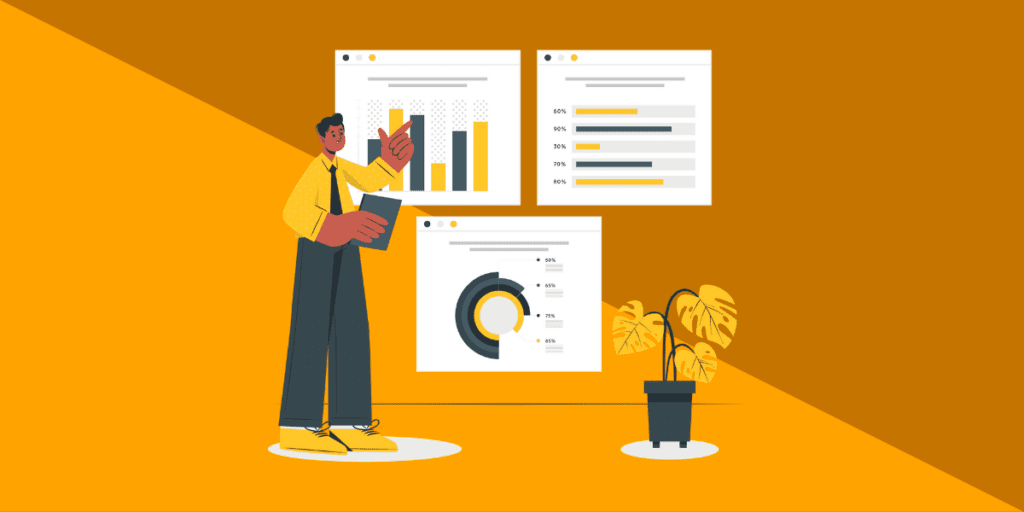Note: this cheat sheet is updated for the latest 2025’s curriculum.
Ah, I remember the days where I looked at the sheer volume of formulae and concepts in CFA Level 1 FSA (Financial Statement Analysis) in despair. And how I felt 5x worse when studying Level 2’s FSA section…
Financial Statement Analysis is one of the largest hurdles in the CFA exams, especially for Level 1 and Level 2. That’s why we decided to create our Cheat Sheet series of articles, which focuses on one specific topic area for one specific CFA Level.☕
More Cheat Sheets will be published and continuously updated, sign up to our member’s list to be notified first.
By referring to the CFA Learning Outcome Statements (LOS), we prioritize and highlight the absolute key concepts and formula you need to know for each topic. With some tips at the end too!
Use the Cheat Sheets during your practice sessions to refresh your memory on important concepts.
Let’s dive in – this is a MONSTER article for a monstrous topic 🙂 Bookmark and come back to it often!
- CFA Level 1 FSA: An Overview
- LM1: Introduction to Financial Statement Analysis
- LM2: Understanding Income Statements
- LM3: Analyzing Balance Sheets
- LM4 & 5: Analyzing Statements of Cash Flow I & II
- LM6: Analysis of Inventories
- LM7: Analysis of Long-Term Assets
- LM8: Topics in Long-Term Liabilities and Equity
- LM9: Analysis of Income Taxes
- LM10: Financial Reporting Quality
- LM11: Financial Analysis Techniques
- LM12: Introduction to Financial Statement Modeling
- CFA Level 1 FSA Tips
CFA Level 1 FSA: An Overview

FSA is a key foundational topic for CFA Level 1, which forms a basis for Level 2 learnings, but drops off at Level 3.
FSA has the second largest topic weighting after Ethics in Level 1. This is one of the unmissable topic areas – key to passing Levels 1 and 2, and therefore key to the entire CFA program.
2025 CFA Level 1 Financial Statement Analysis’ topic weighting is 11%-14%, which means 20-25 questions of the 180 questions of CFA Level 1 exam is centered around this topic.
It is covered in Topic 5 which contains 12 Learning Modules (LMs).
Here’s the summary of FSA chapter readings:
This topic area is bread-and-butter for a wide range of financial roles, including buy and sell-side analysts, asset managers, wealth managers and investment bankers.
In essence, the CFA Level 1 Financial Statement Analysis topics teaches you how to:
– read and understand each component of the financial statements;
– assess whether these reported financials are fair, and if not, how to make adjustments to these numbers for the purpose of your valuation analysis;
– independently value an asset or a company for investment purposes.
LM1: Introduction to Financial Statement Analysis

4 types of audit reports
| Audit Opinion | What does this mean? |
|---|---|
| Unqualified | This is issued when the financial statements presented are free of material misstatements and are in accordance with GAAP. This is the best report a company can receive from an external auditor, as it means a company’s financial health is fairly presented in the financial statements. |
| Qualified | This is issued when one or two situations encountered did not comply with GAAP. However, the rest of the financial statements are fairly presented. |
| Adverse | An adverse audit opinion is the opposite of an unqualified opinion. This means that the financial statements of the company audited are materially misstated and generally do not comply with GAAP. |
| Disclaimer | A disclaimer opinion is issued when the auditor could not form, and consequently refuses to present, an opinion on the financial statements. |
Accrual accounting
| Type | Description | Asset or Liability? |
|---|---|---|
| Unearned revenue | Cash received before goods/services provided | Liability |
| Accrued revenue | Cash not yet received after goods/services provided | Asset |
| Prepaid expenses | Cash paid before expense incurred | Asset |
| Accrued expenses | Cash not yet paid after expenses incurred | Liability |
LM2: Understanding Income Statements

Basic EPS
\small Basic \space EPS=\frac{Net \space Income - Preferred \space Dividends}{Weighted \space Average \space Number \space of \space Shares \space Outstanding}Remember that weighted average number of shares outstanding is the number of shares outstanding during the year, weighted by the portion of the year they are outstanding.
Stock splits and stock dividends are applied retrospectively to the beginning of the year, so the old shares are converted to the new shares for consistency.
One more thing, please ignore dividend paid to common shareholders. Only preference shareholders matter here.
Diluted EPS
\scriptsize Diluted EPS=\frac{{Net \choose Income}-{Preferred \choose Dividends}+{Convertible \space Preferred \choose Dividends}+{Convertible \space \choose Debt \space Interest}(1-t)}{{Weighted \space \choose avg \space shares}+{Shares \space from \space conversion \space of \choose convertible \space preferred \space shares}+{Shares \space from \space conversion \space of \choose convertible \space preferred \space debt}+{Shares \space issuable \choose from \space stock \space options}}Remember that:
- For preference shares, we need to subtract the preference dividends in the numerator, as well as add on the new shares issued from the conversion in the denominator.
- For convertible bonds, we need to add the after-tax interest in the numerator, as well as add on the new shares issued from the conversion in the denominator.
- For stock options, use the Treasury stock method.
LM3: Analyzing Balance Sheets

Accounting for gains or losses on marketable securities
| Held-to-Maturity | Available-for-Sale | Trading Securities | |
|---|---|---|---|
| Balance Sheet | Cost or Amortized Cost | Fair Value | Fair Value |
| Dividend, Interest & Realized Gains & Losses | Income Statement | Income Statement | Income Statement |
| Unrealized Gains & Losses | Not reported | Other Comprehensive Income (OCI) | Income Statement |
LM4 & 5: Analyzing Statements of Cash Flow I & II

IFRS vs US GAAP for cash flow components
| Items | IFRS | US GAAP |
|---|---|---|
| Dividend paid | Operating / Financing | Financing |
| Interest paid | Operating / Financing | Operating |
| Dividends received | Operating / Investing | Operating |
| Interest received | Operating / Investing | Operating |
| All taxes | Generally categorized as operating. A portion can be categorized as financing or investing if attributable to these areas. | Operating |
| Format of statement | Both direct and indirect formats are allowed, but direct is preferred. | Both direct and indirect formats are allowed, but direct is preferred. A reconciliation of net income to cash flow from operating activities must be provided for any method. |
Free cash flow to firm (FCFF)
FCFF = NI + NCC + [Int * (1-t)] – FCInv – WCInv
= CFO + [Int * (1-t)] – FCInv
where: NI = net income, NCC = non-cash charges, Int = interest expense, t = tax rate, FCInv = fixed capital investment, WCInv = working capital investment
Free cash flow to equity (FCFE)
FCFE = CFO – FCInv + Net Borrowing
FCFE is the cash flow available to a company’s stockholders after all operating expenses and borrowing costs (principal and interest) have been paid, and necessary working capital and fixed capital investments have been made.
LM6: Analysis of Inventories

LIFO vs FIFO with rising prices and stable inventory levels
| LIFO | FIFO | |
|---|---|---|
| COGS | Higher | Lower |
| Income Taxes | Lower | Higher |
| Earnings before Taxes (EBT) | Lower | Higher |
| Earnings after Taxes (net income) | Lower | Higher |
| Ending inventory | Lower | Higher |
| Working capital | Lower | Higher |
| Cash flow (after tax) | Higher | Lower |
Converting LIFO to FIFO
- FIFO Inventory = LIFO Inventory + LIFO Reserve
- FIFO COGS = LIFO COGS – change in LIFO Reserve
- FIFO Net Income = LIFO Net Income + change in LIFO Reserve * (1-t)
- FIFO Retained Earnings = LIFO Retained Earnings + LIFO Reserve * (1-t)
LM7: Analysis of Long-Term Assets

Revaluation of long lived assets
- IFRS allows the use of cost model or revaluation model, but US GAAP only allows cost model.
- If a revaluation initially decreases asset value, this is recognized as a loss in income statement. In future, if a revaluation subsequently increases asset value, the increase – to the extent that it reverses the amount previously decreased – is recognized as a gain in income statement. Any excess gains beyond the reversal amount is recognized directly in equity as a revaluation surplus.
- If a revaluation initially increases asset value, the increase goes directly in equity as a revaluation surplus. A subsequent decrease in the valuation amount first reduces the revaluation surplus, and any excess beyond the reversal amount is recognized as a loss in income statement.
IFRS vs GAAP: Impairment of Property, Plant & Equipment and Intangible Assets
| IFRS | US GAAP |
|---|---|
| Assets tested for impairment annually | Assets tested for impairment only when firm may not recover carrying value through future use. |
| An asset is impaired when carrying value > recoverable amount | An asset is impaired when carrying value > undiscounted future cash flows |
| If impaired, the asset is written down to recoverable amount and a loss is recognized. | If impaired, the asset is written down to fair value and a loss is recognized. |
| Subsequent recoveries are allowed, but cannot exceed historical cost | Loss recoveries are not permitted |
LM8: Topics in Long-Term Liabilities and Equity

Finance lease classification under US GAAP
A lease must be classified by a lessee as a finance lease if any one of the 5 criteria below is met:
- Ownership transfer: Ownership of the asset is transferred to the lessee at the end of the lease term.
- Purchase option: Lessee has the option to purchase the asset and is likely to do so.
- Lease term: The lease term covers most of the leased asset’s useful life.
- Minimum lease payment: The present value of lease payments at inception is close to the asset’s fair value.
- Specialized asset: the asset is highly specialized and only the lessee can use it without modification, and has no alternative use to the lessor.
If none of the criteria above is met, then the lessee should classify the lease as an operating lease under US GAAP.
IFRS requires all leases to be treated the same manner as finance lease under US GAAP.
Lessee accounting
IFRS has one accounting model for both finance or operating lease for lessees, but US GAAP has different accounting models for each.
| IFRS | US GAAP | |
|---|---|---|
| Balance sheet | IFRS does not allow operating lease classification. For finance lease: at inception, the PV of future lease payments is recognized as an asset and related debt as a liability. Asset is depreciated on a straight line basis. Lease payable is amortized. Asset and liability portion differ over the lifetime of the lease. | Similar treatment as IFRS for finance lease. For operating lease (like a rental agreement): at inception, the PV of future lease payments is recognized as an asset and the related debt as a liability. Both asset and lease payable are amortized the same way. Hence, asset and liability portion will always equal each other. |
| Income statement | Interest expense = liability at the beginning of period x discount rate | Finance lease: similar treatment as IFRS. Operating lease: interest and amortization expense is reported as one single lease payment (not separated out), treated as an operating expense. |
| Cashflow statement | Interest expense of finance lease payment can be classified as operating or financing cashflow. Finance lease principal payment is a financing cashflow. | Finance lease: Interest portion of lease payment is classified as an operating cashflow. Operating lease: a single lease expense is recorded as operating cashflow. Interest and principal repayments are NOT reported separately. |
Lessor accounting
- The accounting for lessors are the same under US GAAP & IFRS (yay!). There are different treatments for finance lease and operating lease.
| Operating leases (IFRS & US GAAP) | Finance leases (IFRS & US GAAP) | |
|---|---|---|
| Balance sheet | Asset is recognized on the balance sheet. | Lease asset is removed from the balance sheet. Lease receivable (PV of future lease payments) and residual value is reported. |
| Income statement | Lease income and depreciation expense is reported. | Interest income on lease receivable is reported as revenue. |
| Cashflow statement | Lease payments received are classified as operating cashflow. | Lease payments received are classified as operating cashflow. |
LM9: Analysis of Income Taxes

Deferred Tax Assets (DTA) & Deferred Tax Liabilities (DTL)
| Deferred Tax Assets (DTA) | Deferred Tax Liability (DTL) | |
|---|---|---|
| Definition | Created when income tax payable exceeds income tax expense due to temporary difference. This means that taxable income is higher than accounting profit. | Created when income tax payable is less than income tax expense due to temporary difference. This means that taxable income is lower than accounting profit. |
| Examples | – Assets tax base > carrying amount – Liability’s carrying amount > tax base | – Assets carrying amount > tax base – Liability’s tax base > carrying amount |
Impact of tax rate changes
Income tax expense = Income tax payable + Change in DTL – Change in DTA
LM10: Financial Reporting Quality

Depreciation methods
| Depreciation methods | Depreciation expense formula |
|---|---|
| Straight line | (Original cost – Salvage value) / Depreciable life |
| Double declining balance (DDB) | 2 / (Depreciable life) x Book value at beginning of year t |
| Units of production | (Cost – Salvage value) / (Total output) x Output units at time t |
LM11: Financial Analysis Techniques

Activity ratios
| Activity ratios | Formula |
|---|---|
| Inventory turnover | (Cost of goods sold) / (Avg inventory) |
| Days of inventory on hand (DOH) | 365 / (Inventory turnover) |
| Receivables turnover | Revenue / (Average Receivables) |
| Days of sales outstanding (DSO) | 365 / (Receivables Turnover) |
| Payables turnover | (Purchases) / (Average Trade Payables) |
| Number of days of payables | (365) / (Payables Turnover) |
| Working capital turnover | (Revenue) / (Average Working Capital) |
| Fixed asset turnover | (Revenue) / (Average Net Fixed Assets) |
| Total asset turnover | (Revenue) / (Average Total Assets) |
Liquidity ratios
| Liquidity ratios | Formula |
|---|---|
| Current ratio | (Current assets) / (Current liabilities) |
| Quick ratio | (Cash + Marketable securities + Receivables) / (Current liabilities) |
| Cash ratio | (Cash + Marketable securities) / (Current liabilities) |
| Defensive interval ratio | (Cash + Marketable securities + Receivables) / (Daily cash expenditures) |
| Cash conversion cycle | = Days of inventory on hand (DOH) + Days of sales outstanding (DSO) – Number of days of payables |
Solvency ratios
| Solvency ratios | Formula |
|---|---|
| Debt to asset ratio | (Total debt) / (Total assets) |
| Debt to capital ratio | (Total debt) / (Total debt + Total shareholder’s equity) |
| Debt to equity ratio | (Total debt) / (Shareholder’s equity) |
| Financial leverage ratio | (Average total assets) / (Average total equity) |
| Interest coverage ratio | (EBIT) / (Interest payments) |
| Fixed charge coverage ratio | (EBIT + Lease payments) / (Interest payments + Lease payments) |
Profitability ratios
| Profitability ratios | Formula |
|---|---|
| Gross profit margin | (Gross profit) / Revenue |
| Operating profit margin | (Operating income) / Revenue |
| Pretax margin | EBT / Revenue |
| Net profit margin | (Net profit) / Revenue |
| Operating ROA | (Operating income or EBIT) / (Average total assets) |
| Return on assets (ROA) | (Net income) / (Average total assets) |
| Return on total capital | EBIT / (Short term debt + long term debt + equity) |
| Return on equity (ROE) | (Net income) / (Equity) |
| Return on common equity (ROCE) | (Net income – preferred dividends) / (Average common equity) |
Dupont analysis: decomposition of ROE
\small
\begin{align*}
ROE&=\frac{Net \space income}{Average \space total \space assets} \times \frac{Average \space total \space assets}{Average \space shareholders' \space equity}
\newline&= ROA \times Leverage \space ratio
\end{align*}\small
\begin{align*}
ROE&=\frac{Net \space income}{Revenue} \times \frac{Revenue}{Average \space total \space assets} \times \frac{Average \space total \space assets}{Average \space shareholders' \space equity}
\newline&= Net \space profit \space margin \times Asset \space turnover \times Leverage \space ratio
\end{align*}\scriptsize
\begin{align*}
ROE&=\frac{Net \space income}{EBT} \times \frac{EBT}{EBIT} \times \frac{EBIT}{Revenue} \times \frac{Revenue}{Average \space total \space assets} \times \frac{Average \space total \space assets}{Avg \space shareholders' \space equity}
\newline&= Tax \space burden \times Interest \space burden \times EBIT \space margin \times Asset \space turnover \times Leverage \space ratio
\end{align*}Valuation ratios
| Valuation ratios | Formula |
|---|---|
| P/E | (Price per share) / (Earnings per share) |
| Dividend payout ratio | (Common share dividend) / (Net income attributable to common shares) |
| Retention ratio (RR) | 1 – Dividend payout ratio |
| Sustainable growth rate (g) | Retention rate x ROE |
LM12: Introduction to Financial Statement Modeling

A straightforward chapter to read. Know your Porter’s five forces!
CFA Level 1 FSA Tips

Unfortunately there is no shortcut to mastering Financial Statement Analysis – you’ll have to set aside adequate time in your study plan (get yours free here) to learn this topic area thoroughly.
As mentioned earlier in the article, there is a lot of testable material in the vast amount of readings in the CFA exams.
Not only does the FSA have a 11-14% weighting in the CFA Level 1 exams but FSA can sometimes be weaved into other topic area questions. This topic isn’t a fringe one, so don’t skirt around it – tackle it head-on.
Here are some tips to get you fighting-fit in FSA:
- Make practice front and center of your FSA plan:
- Lots of practice questions help solidify your understanding, so make sure you line them up.
- Try to attempt all the end-of-chapter questions to get used to the breadth of items that can crop up in the actual exam.
- FSA questions can require a lot of reading and calculation so time management and answering speed will be crucial as well.
- Videos can help a lot:
- There are likely a lot of confusing concepts or calculations that you may get lost in repeatedly.
- A good way to break the cycle of confusion is to simply spend a few minutes on YouTube, or find a third party provider that presents concepts well on video.
- Find an explanation of the specific concept – sometimes all you need is someone to take you through one example.
- Pay attention to IFRS and GAAP:
- ‘IFRS vs GAAP’ questions are a favorite in the CFA exams, so make notes on what the differences and similarities are between the two accounting standards and make sure you have them memorized.
- Build a 3-statement financial model:
- To truly understand FSA you’ll need to master the balance sheet, income statement and cash flow statement.
- A good way to achieve this is to build a simple 3-statement financial model – not nearly as intimidating as it sounds.
- Pick your favourite company, download their financial reports and get started – preferably with a financial modelling book.
More Cheat Sheet articles will be published and continuously updated. Get ahead of other CFA candidates by signing up to our member’s list to get notified.
Meanwhile, here are other related articles that may be of interest:
- CFA Level 1 Cheat Sheets series: Quant Methods | Economics | Corporate Issuers | Derivatives | Fixed Income | Equity Investments | Ethics | Alt Investments | Portfolio Management
- CFA Level 1: How to Prepare and Pass CFA in 18 Months
- CFA Level 1 Tips: Top 10 Advice from Previous Candidates
- 18 Actionable Ways to Improve Your Study Memory
- How to Study Effectively: Proven Methods that Work for CFA, FRM and CAIA
- The Ultimate Guide to CFA Practice Questions

Good 👍
Hello, there are formula on the cheatsheet which is not visible due to error – “katex is not defined”. Can somebody help me with this?
Hi Sujaan, I don’t see it myself. Which chapter reading is this?
L1 cheat sheets had been a great help!
Would love Level 2 cheat sheets!!
Hoping to work on 2023 ones! 🙂 L2 is a beast -_- ||
typo?
FIFO Net Income = FIFO Net Income + Change in LIFO Reserve * (1-t)
should be
FIFO Net Income = LIFO Net Income + Change in LIFO Reserve * (1-t)
Yes Flerken Cat! Thanks for spotting this, corrected 🙂
Super helpful and well done! Thank you for all these cheatsheets.
Just one question, “FIFO Net Income = FIFO Net Income + change in LIFO Reserve * (1-t)”, is it FIFO NI in the second part of the formula or LIFO NI? Thanks
can anyone of you send me this cheat sheet in PDF Formate….
This is in our to-do list – but for now we don’t have any PDF cheat sheets available. You can always access them online though – with the benefit of them always being updated!
Hi, are the PDF versions of the cheat sheets already available?
Cheers
I’m afraid not, sorry! So far we’re finding that it’s more advantageous to maintain an online, always-updated version, since PDFs can get outdated.
Thank you!
Hello Sophie,
Thank you for the summaries. Please could you do same summaries for Economics, Fixed Income, Portfolio Management and Alternative Investments
Hi Ifeoma, it’s in the plans, but as you know good summaries take time, so we will roll out our new Cheat Sheets in the next few months. Hope your studies are going well!
very helpful but what about reading 29 and 30
Hi Linnette12, glad you found it helpful. As FRA is such a large section, I’ve focused on the key chapters with concepts/formulae you need to know, leaving out reading 29-30 as they are relatively straightforward and shorter vs. the rest.
This summary is very helpful, thank you for sharing!
Noticed a typo though, it should be
Sustainable growth rate (g) = Retention rate x ROE
Ooh yes, thanks for spotting that Ank! Corrected 🙂
You’ve been studying hard!
This summarize is just wonderful !
I’m glad you found it helpful! More coming for other topics 🙂
Do subscribe to our free weekly newsletter to be alerted of that, and feel free to share this with your friends!